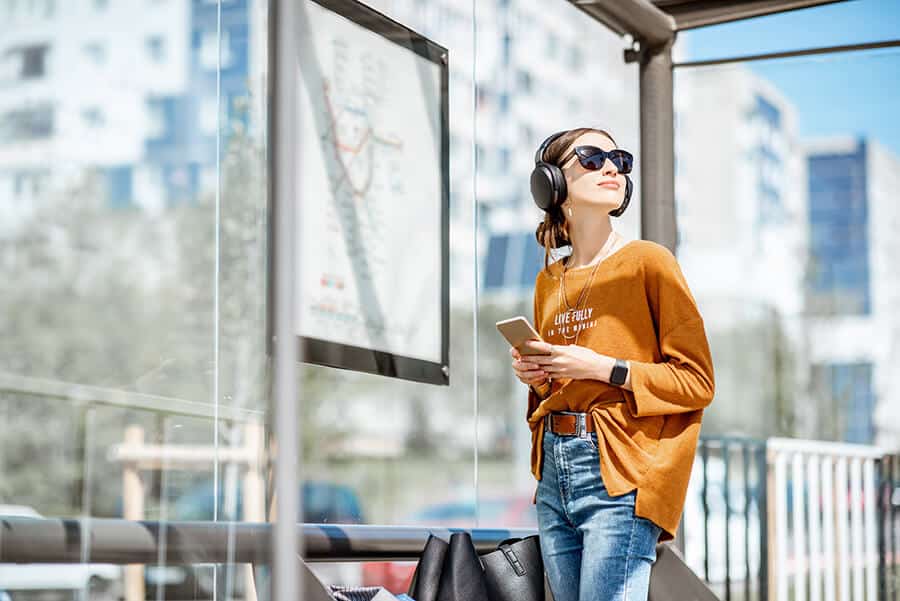If you are a seasoned traveler who doesn’t get surprised easily, these alternative means of transport may pique your interest. From multi-seat beer bikes to houseboats, some of these options will get you started on packing for your next trip.
Rickshaws vs Tuk Tuks
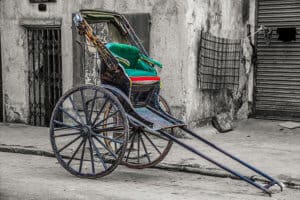
These peculiar means of transport are most likely to come to mind when you talk about Asian resorts, affordable accommodation, and flavorful cuisine. Rickshaws are two-wheeled vehicles pulled by one man. They can seat one or two passengers and act as a faster alternative to taxis in traffic jams. Rickshaws became popular in the late 19 century as they provided jobs for men in Asian countries.
With the invention and spread of cars, tuk tuks took over and replaced rickshaws. Tuk tuks or auto rickshaws resemble their forerunner with the exception of being motorized. They look like comfortable bikes that seat the driver and two passengers.
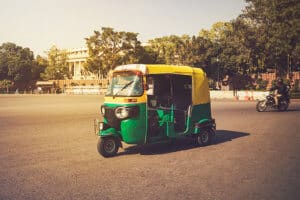
Both rickshaws and tuk tuks remain popular transport amongst tourists as they are a cheaper alternative to taxis. Depending on the distance, prices will vary from 30 baht ($1) for a short ride to 200+ baht ($7+) for a ride across town. Keep in mind that some drivers will overestimate the price for a ride, so make sure to use your most eloquent and persuasive bargaining skills. For a ride on a tuk tuk or a rickshaw, travel to Egypt, India, Thailand, Cuba, Peru, and some other countries in Asia.
Water Taxi
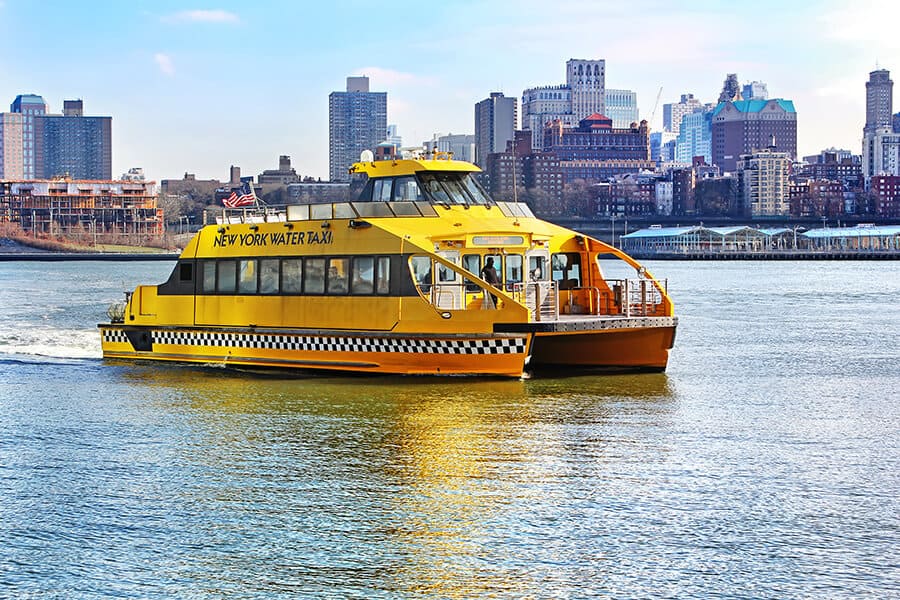
Can you imagine commuting to work on a water taxi rather than a bus? In fact, water taxis are also called water buses as they usually follow set routes with scheduled stops. Water taxis are popular in cities with a developed network of canals and rivers with the prevailing majority of passengers being locals. Such taxis can go as fast as 80 km/h, competing with the usual means of transport.
Some of the cities that have adopted water taxis are New York, Rotterdam, Boston, and Venice. New York City has an IKEA express ferry which travels between Wall Street’s Pier 11 in Manhattan to Brooklyn’s IKEA home furnishings store. The one-way ride costs $5 during weekdays and is free on the weekends. Water taxis in Rotterdam operate in three city zones: East, West, and Centre. Depending on the zone, a one way ticket will cost between €4,50 and €10.
Floating tram in Germany
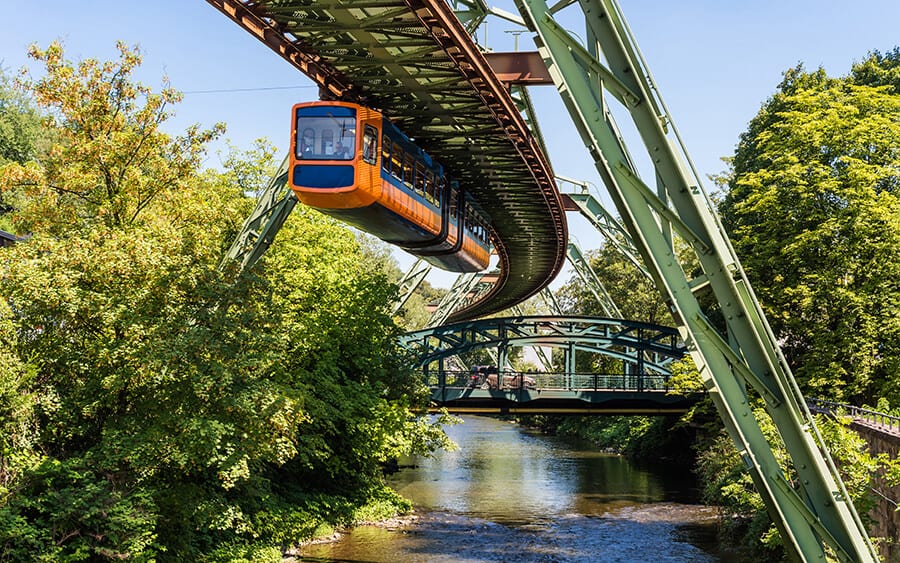
Wuppertal’s Electrical Elevated Railway is also known as a floating tram. The cars are suspended from a single rail underneath a steel frame that weighs around 19,000 tonnes. The monorail has been in operation for more than 100 years.
The suspension railway only operates on the weekends and holidays and runs every six minutes. The fare for a single trip with the Wuppertal Suspension Railway is €2,90 for adults and €1,70 for children. Kids under six years travel for free. Passengers can also get a flexible 24- and 48-hour ticket that allows multiple people to take unlimited rides. Simply choose the number of persons when purchasing the ticket. The unlimited tickets cost €7,20 and €13,70 and adding each additional person is another €3,50 or €6,60, for the 24- and 48-hour tickets, respectively.
Beer-Bike Tours
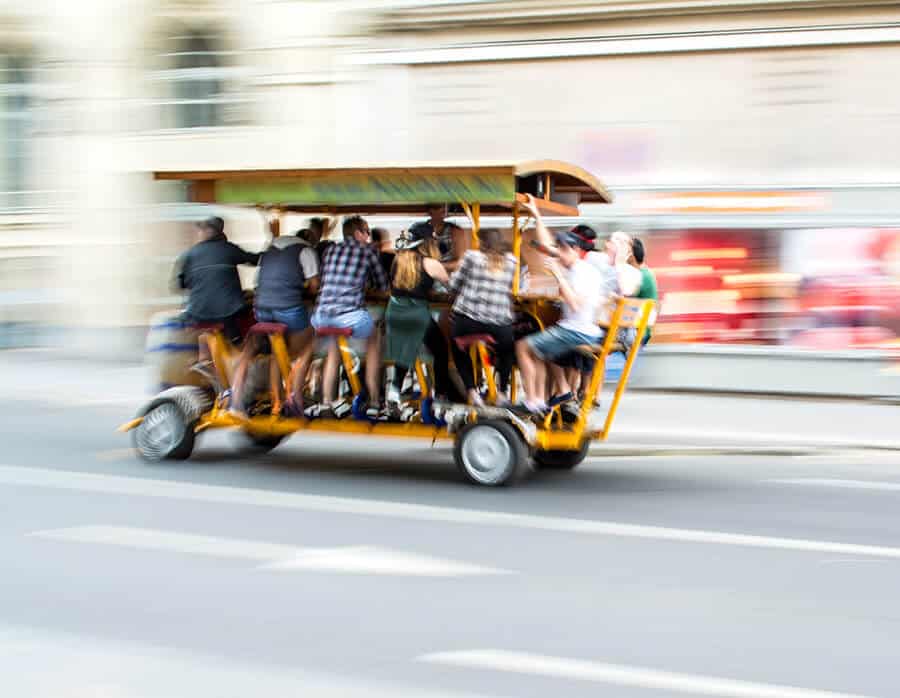
Imagine having a party, going sightseeing, and exercising all at once? These three tasks seem much more manageable if you simply rent a beer bike. The beer bike is a multi-passenger attraction that can carry up to 15 people. Many large cities including Prague, Bratislava, and Budapest offer tourists this alternative way of sightseeing for a total cost of around €360. Prague’s private tours across Prague’s Old Town and along the River Vltava include 1h30min of sightseeing while sipping on unlimited Czech beer for six to fifteen people per booking.
Initially, the party bike or the bike cafe was invented in 1997 by two brothers, Henk and Zwier Van Laar, in the Netherlands, the country where beer has a special place in the local culture. The pedaling force is provided by the passengers while steering and braking are done by the driver. Party bikes are long and narrow vehicles with benches and seats facing each other to allow for easy socializing. There will be a platform for the bartender and a keg of beer in between the benches so that the beer is flowing.
Interestingly enough, earlier versions of drinking beer while pedaling existed in the US and were a popular entertainment option for college students. Rice University records show that students held beer bike races as early as 1957. The teams divided into those who were the beer chuggers and those who raced on their bicycles. And the course of action was the following: once the chugger was done with the beer, the racer from the chugger’s team began to bike around the track. The university still cherishes this long-standing tradition – modern rules require male participants to chug 24 ounces and bike three laps while women chug 12 ounces and bike two laps.
Amphibious Buses
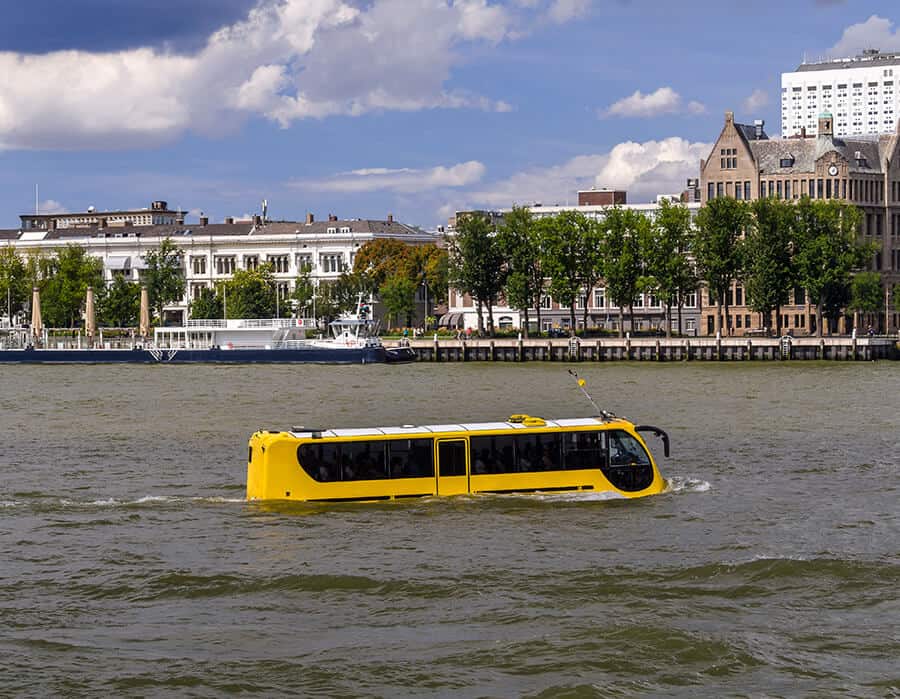
Why change your means of transport if you can get both the best sea and land views on an amphibious bus tour around some of the world’s major capitals? Amphibious buses are vehicles that have the capacity to travel both on land and in water. Some of the earliest self-propelled prototypes were invented in the late 18th century, with steam-powered carriages appeared almost 100 years afterwards. Many amphibious vehicles have found use in expeditions, both military and recreational.
Tokyo offers its visitors a ride on a Kaba bus, an amphibious bus named after the hippo, a king of animals which lives both on land and in the water. Guests will enjoy a ride on Lake Yamanaka at the foot of Mt. Fuji and around a large artificial island in Tokyo Bay called Odaiba, within the Tokyo metropolis. Tickets cost around $30 for adults and $16 for children for the 30-minute ride.
The Swedish capital also offers water tours around its main attractions. For $35, tourists will enjoy a 75-minute tour around Stockholm’s historic center, including the Royal Palace, the Royal Theatre, the Stureplan, and the Royal Island of Djurgarden. Similar tours are available in Rotterdam, Salzburg, and London.
Houseboats in India
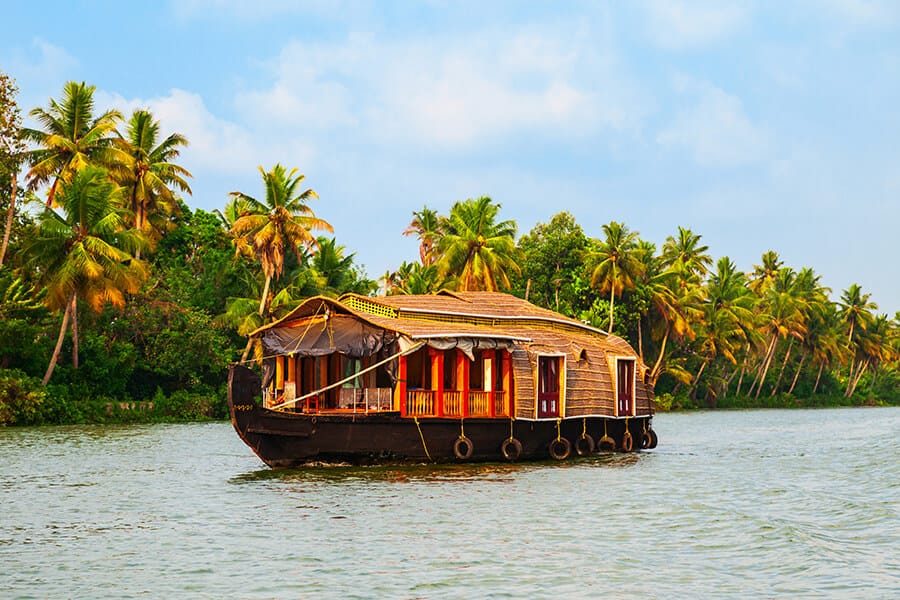
Houseboats are boats that have been designed to be used primarily as transport homes. They are not usually motorized as they tend to be kept stationary, tethered to land to provide utilities. In recent years, more tourists are opting for houseboats as a quirky type of accommodation for their holidays.
India’s Lake Dal is a magnet for tourists who want to experience tranquil living on the water. Depending on the size, houseboats have a balcony, a lounge area, and several bedrooms and bathrooms. If tourists are opting for a non-stationary houseboat, the fee includes free services of a shikara, a wooden boat used to get from the houseboat to the nearest dock.
Some of the houses that were built in the early 1900s are still rented out to tourists. Houseboats are made of wood, they vary in the degree of luxury, and some options will provide a stay for as little as $18 per night for two adults.
In case you’ve travelled so much that the memories from your holidays get blurred into one similar experience, have a go at incorporating some of these ideas into your to-do list. These alternative means of transport will definitely leave you in awe and provide great stories about your novel experiences.
Photos: Shutterstock
More articles on alternative tourism here:
Support us!
All your donations will be used to pay the magazine’s journalists and to support the ongoing costs of maintaining the site.
Share this post
Interested in co-operating with us?
We are open to co-operation from writers and businesses alike. You can reach us on our email at cooperations@youthtimemag.com/magazine@youthtimemag.com and we will get back to you as quick as we can.
